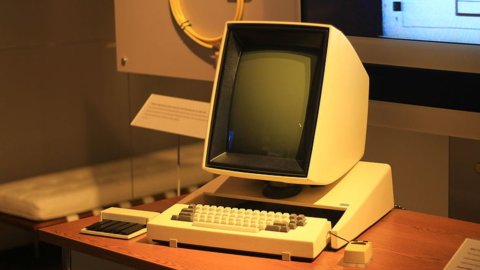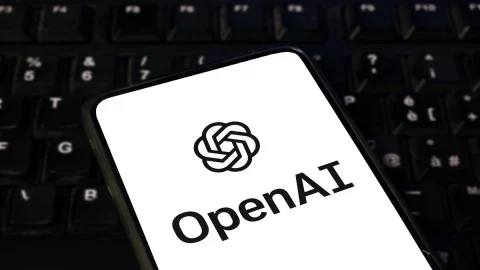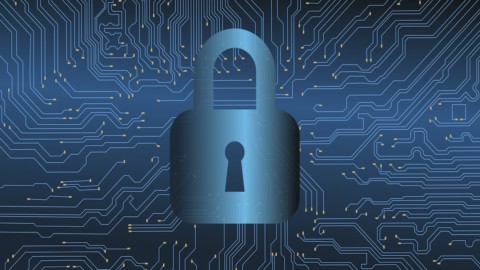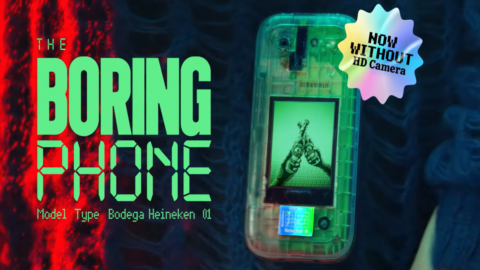Failures & Bankruptcies
Over the years computers have really changed the way we live. To get us to where we are today, visionary entrepreneurs and technologists have furiously pushed innovation forward. Software has evolved to the threshold of artificial intelligence, hardware has improved at a rate never seen in history. This path, as happened in any other industrial revolution, however, has not only been studded with incredible successes, but also with enormous failures. Some of these, however, have been such important and seminal experiences that calling them failures is something that doesn't do them justice at all. They could rather be defined virtuous failures, virtuosi in the light of historical analysis.
Certainly there hasn't been that public and market success that draws the line between a triumph and a flop. A lot of money was burned, but the technology that was invented and tested during the virtuous failures ended up marking the future of the entire sector. Some of these experiences were too far ahead for the characteristics of the market of the time, others miscalculated the time to market, others were simply the vanity project of an incumbent of the time. The podium of the greatest flops is occupied precisely by virtuous failures. And it is precisely from these that we want to start.
1.XEROX HIGH,XEROX STAR

On the left, a detail of the XEROX Alto (1973) preserved at Computer History Museum of Mountain View. On the right, the XEROX Star (1981), an advanced and commercial version of the Alto.
Developed in 1972 at XEROX PARC (Xerox's Palo Alto Research Center) in Palo Alto, from which it takes its name, the Alto was the first computer in history with a visual graphical user interface (GUI) that mimicked a desk top ( desktop) and the objects located on it. The Alto also had all the technical features that would define the modern personal computer. It had a graphic display, a mouse to direct a pointer with which to select the icons through which to start operations, it mounted the Ethernet, a technology for local area networks, a removable hard disk of 2,5 megabytes. Stock RAM was 128KB. To print, he used a laser printer driven by a language, Postscript, which printed exactly what was seen on the screen.
It wasn't just hardware and the system shell that mattered. The Alto also offered a suite of application software that would, years later, come bundled with every personal computer: word processor, spreadsheet, vector and raster graphics programs, and e-mail. The Alto's programming language was Small Talk, that is, an object-oriented language that is the patriarch of modern programming language architecture.
The PARK scientists were inspired by the prototype of the on Line System developed by the visionary technologist Douglas Engelbart and presented in 1969 at MIT, implementing it to unimaginable levels.
XEROX, 5 thousand kilometers away from the PARC and almost entirely absorbed by the problems of its core business, did not understand the revolutionary scope of the work of the PARK designers and, despite having the possibilities, did not bring that technology to the market. Alto was produced in about two thousand copies mostly used by XEROX itself. Its price was prohibitive. It fluctuated between 12 and 40 dollars at the time.
In 1981, long before Apple's Lisa or Macintosh, XEROX released the Xerox Star, which was the evolution of the Alto. But it was a slow computer (it took minutes to save a file) and an expensive one too: it was priced at $16.595. It was a failure: only thirty thousand copies were sold. From a wonderful project, a mediocre product was born, demonstrating that execution is decisive in packaging a success.
XEROX itself made another mistake or, perhaps, the most important thing it could do. He allowed Steve Jobs to visit the PARK labs. The co-founder of Apple had given XEROX a small stake in Apple in exchange for the former's commitment to allow a thorough inspection of Apple's technologists at the PARK. In December 1979 Jobs, Bill Atkinson, Jeff Raskin and John Couch traveled the 15 kilometers that divide Cupertino from Palo Alto to be received at the PARK where they were shown the ambaradan.
At the end of the visit Jobs, who did not contain his joy for what he had seen, said to the PARK planners: “You are sitting on a gold mine! I can't believe XEROX isn't taking advantage of that!" He is extreme proof that it is difficult for an incumbent to adopt a radical and disruptive business innovation. Indeed it so happened that all PARC work was taken over by Apple and, later, by Microsoft which can be said to have been generously incubated by XEROX.
Apple's raid on Xerox PARC has been called by some "the largest robbery in the history of the industry." Jobs later explained XEROX's behavior as follows: “With their copier mentality, they had no idea what a computer could do. They were only able to extract defeat from the greatest victory achieved by the computer industry. Xerox could have owned the entire computer industry." But it was Microsoft and Apple that owned it.
NeXT computer

In 1986, after the traumatic exit from Apple, Steve Jobs, with a handful of escapees, decided to throw himself into a new adventure to do what he hadn't been able to do at Apple because of the "bozos from Cupertino" (as Jobs defined the Apple management at the time). In three "wild" years he did something unthinkable, mythological. It is no coincidence that Walter Isaacson, Jobs' biographer, entitles the chapter on the NeXT years, "The Liberated Promotheus". A very fitting label, because Jobs and his team, in just two years, built a system that was 15 years ahead of what existed then and what users expected from a computer.
The NeXT, which totally integrated hardware, software and contents, using the state of the art of technology, was a successful synthesis between the personal computer and the professional workstations of the time that had supplanted the mainframe in large corporate systems. In other words, it aimed to unite the generalist user with the corporate one. All of this, unfortunately, was not conceived and designed for the state of the market at the beginning of the nineties of the last century, it was too far ahead… it was 15 years ahead.
Indeed, NeXT in 1988 looked like something that fell to earth from another planet. It was a full multimedia system with a digital signal processor to compose music, it had voice mail. The operating system, NeXTSTEP, was based on an optimized Unix microkernel, had a fully object-oriented software development system. The developers had a tool graphic drag&drop to create system-consistent application user interfaces. It also used vector graphics, Postscript display, to display objects on the screen. It had Render Man as standard, the 3D language used by Pixar to create animated films.
There was jaw-dropping content like the complete works of Shakespeare in hypertext format, the first and best ebook in history. It had an online dictionary (the Merrian-Webster) that could be called from any application. He had the dictionary of synonyms and antonyms and that of quotations from Oxford University Press. In short, it was the perfect car… too perfect”. So perfect as to be dramatically isolated.
In 1988 Jobs expected to sell hundreds of thousands of NeXTs and the market absorbed just a few tens of thousands. Only 50 were produced in a fully automated factory. Born as a university computer, it was effectively snubbed on campus. He turned to the world of large corporations which in the end preferred workstations to NeXT classics from Sun, IBM and HP. He tried to target the consumer world, but was immediately barred by Windows which was taking over almost the entire market.
NeXT cost twice as much as any competition (6 dollars for the basic version) and, above all, it was not at all interoperable with the installed one. Had to throw everything away and start over. An unthinkable step for companies, but also for research centers and universities. Bill Gates refused to develop for NeXT. The major software houses either didn't invest or did so more to please Jobs than out of conviction
In six years, the NeXT project burned $250 million of Jobs himself, Canon and Texan oilman Ross Perot. Eventually Jobs threw in the towel and stopped making the hardware. But in 1995 there was another company on the verge of bankruptcy. It was the Apple of the "bozos of Cupertino". The "bozos" made the only sensible option at the time: recall Jobs. And Jobs set the condition that not only all the NeXT technology be acquired, but also that the whole group that had developed the "perfect machine" be embarked. With these resources he wanted to re-found Apple. And indeed, he did. NeXT technology was the engine of Apple's renaissance and its most important success, the iPhone.
Apple newton

In the early nineties, without Steve Jobs and with Bill Gates who had cornered it, Apple was in desperate need of a "silver bullet", that is, a product that would redefine the market and the balance of power within it . John Sculley and Mike Markkula, who had taken over the Cupertino company, thought that this "silver bullet" could be the Newton, already very ambitious in the name that had been attached to it. The Apple Newton Message Pad, introduced in 1993, was a handheld device equipped with a stylus and handwriting and voice recognition software. On paper a revolutionary device.
It could connect to the Internet, whose communication protocol had been developed at CERN in Geneva in 1991 by Tim Berners-Lee on a NeXT. The Newton was the state of the art of miniaturized technology at the time. It was equipped with a RISC processor from ARM (the company that supplies 80% of the processors of current smartphones), a ROM and an 8 MB RAM memory, both. It used a 5″ (480×320 px 16-bit) resistive touch screen. It had a card and an audio port and infrared connectivity. Apple developers built an ad hoc operating system, called Newton OS and an object-oriented database to store and retrieve the data entered into the system. A respectable trinket that aroused the envy of Jobs who considered Apple as the "ship of the bozos".
The basic idea of the Newton was to provide a personal digital assistant that you could carry in your pocket and use on the go. Something much more and more advanced than a portable computer that Apple itself had launched in 1991. It was the same idea that would guide the designers of the iPhone which was anything but a traditional phone. The iPhone was a sort of child of the Newton. And the iPhone was truly what the Newton had not been, that is, the "silver bullet" that would redefine the parameters of the market.
Paradoxically, the Apple Newton ran into the same barriers that had prevented the NeXT from taking root: too high a price (between 799 and 999 dollars), lack of application software, unpreparedness of the reference user to receive that type of innovation. The Newton also had some operating problems which were probably linked to the limits of the technology of the time rather than the capabilities of the Apple designers. Despite Apple's big cash, the handwriting recognition was extremely flawed, as it still is today 30 years later, as was that of the voice. Only today are we starting to see something decent. Salacious jokes were born about the recognition defects of the Newton which undermined the credibility of the product in a similar way to what happens today in the echo chambers.
The Newton was also excruciatingly slow, as was the NeXT's magneto-optical boot disk version. All problems that made it scarcely usable by a group of users that went beyond the early adopers. In fact, in 1998, one of the first decisions made by Steve Jobs, back at the helm of Apple, was to interrupt the production and marketing of the Newton. It was not only an act of revenge against the "bozo of Cupertino, like that of Ulysses against the Suitors, it was also a meditated and conscious decision. Indeed, it was founded on Jobs's certainty that a pocket device could not rely on a stylus, since the stylus man has five fingers on one hand.
Newton was, however, an extremely seminal project not only for Apple which burned 500 million dollars in five years. Palm, which would build the first PDA with telephone function, copied a great deal from the Newton. The Palm became the progenitor of smartphones. Then came the iPhone and it was a whole other story.




